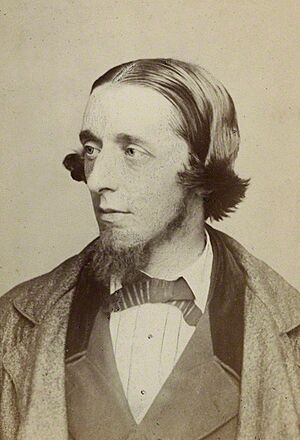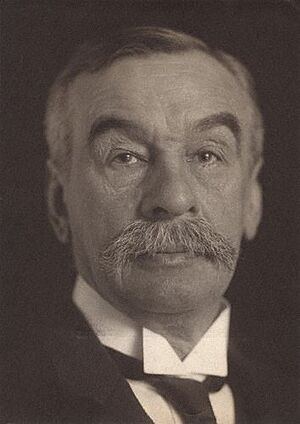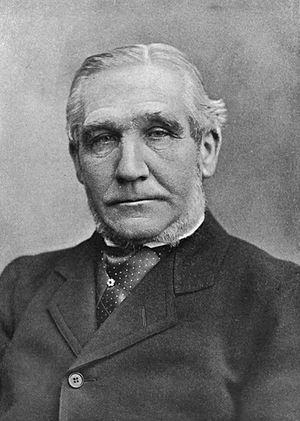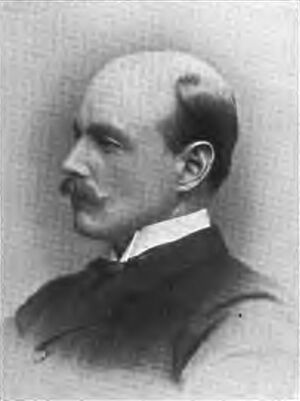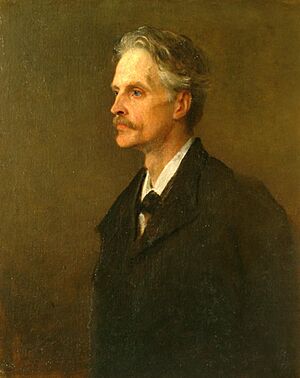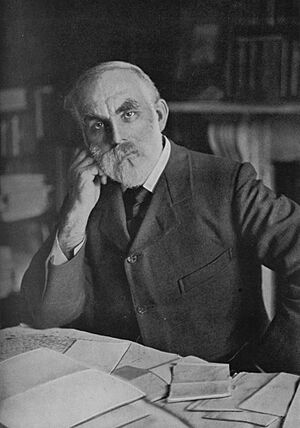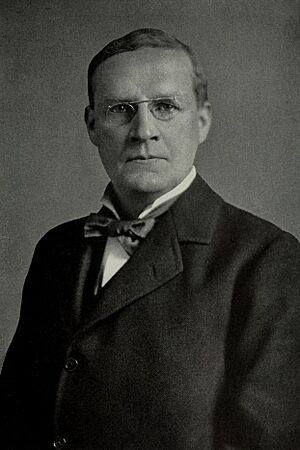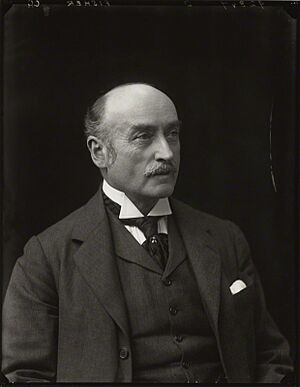President of the Local Government Board facts for kids
The President of the Local Government Board was an important job in the United Kingdom government. This role was often part of the Cabinet, which is a group of the most important ministers. The job was created in 1871 when the Local Government Board was set up. This new board took over tasks from other government departments, like the Board of Trade and the Home Office. It also took over from the Poor Law Board, which helped people in need.
The position of President of the Local Government Board ended in 1919. This happened after the First World War. Its responsibilities were then given to a new job: the Minister of Health.
Contents
What Was the Local Government Board?
The Local Government Board was created in 1871. Its main purpose was to oversee how local areas in the UK were run. Before this, different government groups handled these tasks. The new board brought many of these responsibilities together.
What Did the Board Do?
The Local Government Board had many important jobs. It looked after public health, making sure towns and cities were clean and healthy. It also managed laws about helping people who were poor or struggling. This included overseeing workhouses and providing support to those in need. The board also dealt with local government rules and how local councils operated.
Who Were the Presidents?
Many different people held the job of President of the Local Government Board. These leaders were often Members of Parliament (MPs). They came from different political parties, like the Liberal Party and the Conservative Party. The first president was James Stansfeld. The last person to hold the role was Christopher Addison.
| Liberal Conservative Liberal Unionist | |||||||
|---|---|---|---|---|---|---|---|
| Picture | Name | Time in Office | Political Party | Government | Ref | ||
| James Stansfeld | August 1871 |
March 1874 |
Liberal | Gladstone I | |||
| George Sclater-Booth | March 1874 |
May 1880 |
Conservative | Disraeli II | |||
| John George Dodson | May 1880 |
1882 | Liberal | Gladstone II | |||
| Sir Charles Dilke | 1882 | 1885 | Liberal | ||||
| Arthur Balfour | 1885 | 1886 | Conservative | Salisbury I | |||
| Joseph Chamberlain | 1886 | 1886 | Liberal Unionist | Gladstone III | |||
| James Stansfeld | 1886 | 1886 | Liberal | ||||
| Charles Ritchie | 1886 | 1892 | Conservative | Salisbury II | |||
| Henry Fowler | 1892 | 1894 | Liberal | Gladstone IV | |||
| George Shaw-Lefevre | 1894 | 1895 | Liberal | Rosebery | |||
| Henry Chaplin | 1895 | 1900 | Conservative | Salisbury (III & IV) (Cons.–Lib.U.) |
|||
| Walter Long | 1900 | 1905 | Conservative | ||||
| Balfour (Cons.–Lib.U.) |
|||||||
| Gerald Balfour | 1905 | 11 December 1905 |
Conservative | ||||
| John Burns | 11 December 1905 |
1914 | Liberal (Lib-Lab) |
Campbell-Bannerman | |||
| Asquith (I–III) |
|||||||
| Herbert Samuel | 1914 | 1915 | Liberal | ||||
| Walter Long | 1915 | 1916 | Conservative | Asquith Coalition (Lib.–Cons.–Lab.) |
|||
| The Lord Rhondda | 13 December 1916 |
1917 | Liberal | Lloyd George (I & II) (Lib.–Cons.–Lab.) |
|||
| William Hayes Fisher | 2 July 1917 |
1918 | Conservative | ||||
| Auckland Geddes | 1918 | 1919 | Conservative | ||||
| Christopher Addison | 1919 | 1919 | Liberal (Coalition) |
||||
Why Was the Role Abolished?
The job of President of the Local Government Board ended in 1919. This was a time of big changes after the First World War. The government decided to create a new department called the Ministry of Health. This new ministry took over all the important health and local government tasks. It was a way to make sure public health was a top priority after the war.


